
Nekketsu Kōha Kunio-kun, released as Renegade in the West, is a beat 'em up video game developed by Technōs Japan and distributed by Taito for the arcades in 1986. In the original Japanese version Nekketsu Kōha Kunio-kun, the game revolves around a high-school delinquent named Kunio-kun who must stand up against a series of rival gangs frequently targeting his classmate Hiroshi. In the Western version Renegade, the player controls a street brawler who must face four different gangs in order to rescue his girlfriend being held captive by a mob boss.

Tornado Low Level is a multidirectional flight game developed by Costa Panayi and published in 1984 by the company he co-founded, Vortex Software. The game was released for the ZX Spectrum in 1984, with ports for the Amstrad CPC and Commodore 64 in 1985.

Navy SEALs is a shoot 'em up platform video game developed and published by Ocean Software. It was first released in the United Kingdom for the Amstrad CPC, Amstrad GX4000 and Commodore 64 in 1990. It was later re-released in the rest of Europe for the ZX Spectrum, Atari ST and Amiga home computers in the following year. It was then ported to the Game Boy on 1 September 1991 in the United States. The game is based on the film of the same name and follows the protagonist, Lieutenant Dale Hawkins, progressing through five side-scrolling levels.

Dan Dare: Pilot of the Future is a 1986 video game by Virgin Games for the ZX Spectrum, Amstrad CPC and Commodore 64 home computer systems. It is based on the classic British comic strip Dan Dare. The Commodore 64 version was considerably different in gameplay to the ZX Spectrum and Amstrad CPC versions.

Silkworm is a horizontally scrolling shooter developed by Tecmo and first released for arcades in 1988. In 1989 it was ported to the Amiga, Atari ST, Commodore 64, ZX Spectrum, Amstrad CPC and NES (1990) systems by The Sales Curve and released by Virgin Mastertronic.
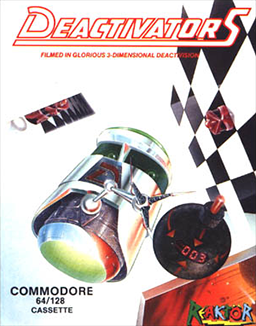
Deactivators is a 1986 puzzle video game designed by David Bishop and Chris Palmer, developed by Tigress Marketing and System Software, and published by Ariolasoft's action game imprint Reaktor. The player controls bomb disposal robots known as deactivators and must use them to deactivate bombs planted by terrorists in five research complexes. The concept for the game came from a brainstorming session between Bishop and Palmer; its design and development took five to six months to complete. It was released for the Amstrad CPC 464, Commodore 64, and ZX Spectrum platforms in October 1986.

Beach Head II: The Dictator Strikes Back is a 1985 video game for the Commodore 64, a sequel to Beach Head, developed and published by Access Software. It was designed by Bruce Carver and his brother, Roger, and was released for the Amstrad CPC, Apple II, Atari 8-bit family, Commodore 64, and ZX Spectrum.
Alligata Software Ltd. was a computer games developer and publisher based in Sheffield in the UK in the 1980s.

19 Part One: Boot Camp is a multi-part action video game released by Cascade Games in 1988 for the Commodore 64 and ZX Spectrum. The inspiration for the game came from two sources: the arcade game Combat School and the Paul Hardcastle song 19, which was itself about the Vietnam War. The player controls a soldier through several training events, including an obstacle course, shooting practice and jeep driving.

Cobra is a 1986 platform game based on the film of the same name. It was developed and published by Ocean Software, and was released in Europe for Amstrad CPC, Commodore 64 (C64), and ZX Spectrum. By 1990, it received a budget re-release.

Agent X, also known as Agent X in the Brain Drain Caper, is a computer game released in 1986 for the ZX Spectrum. The player takes control of the eponymous Agent X in a multi-load game made up of a number of sub-games. It was followed by a sequel, Agent X II: The Mad Prof's Back.
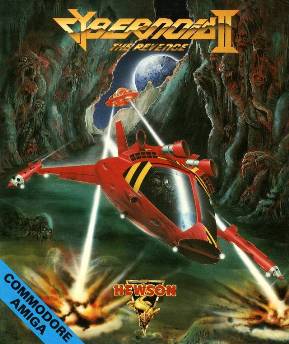
Cybernoid II: The Revenge is a shoot 'em up released by Hewson Consultants in 1988 for the Amstrad CPC, Commodore 64, and ZX Spectrum home computers. It was later ported to the Atari ST and Amiga. It is the sequel to Cybernoid.

Light Force is a 1986 vertically scrolling shooter designed by Greg Follis and Roy Carter, developed by their company Gargoyle Games, and published under their Faster Than Light imprint. It was released for the Amstrad CPC, Commodore 64, and ZX Spectrum platforms.

Back to the Future is a 1985 video game released by Electric Dreams Software for the ZX Spectrum, Commodore 64 and Amstrad CPC. The game is loosely based on the 1985 film of the same name.
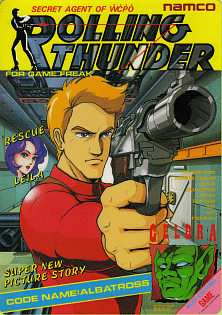
Rolling Thunder is a run and gun video game developed by Namco in Japan and Europe and released in 1986 as a coin-operated arcade video game using the Namco System 86 hardware. It was distributed in North America by Atari Games. The player takes control of a secret agent who must rescue his female partner from a terrorist organization. Rolling Thunder was a commercial success in arcades, and it was released for various home computer platforms in 1987 and the Nintendo Entertainment System in 1989. The original arcade game has been included in various classic game compilations as well. It influenced later arcade action franchises such as Shinobi and Time Crisis, which borrowed mechanics such as taking cover behind crates.
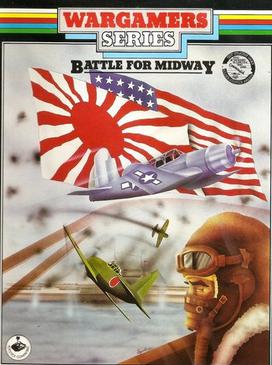
Battle for Midway is a turn-based strategy video game developed and published by Personal Software Services. It was first released in the United Kingdom and France for the MSX in 1984, and was re-released for the Amstrad CPC, Commodore 64 and ZX Spectrum in 1985. It is the second instalment of the Wargamers series. The game is set during the Battle of Midway in the Pacific Ocean theatre of World War II and revolves around the United States Navy attacking a large Imperial Japanese fleet stationed at Midway Atoll, in retaliation for the attack on Pearl Harbor.

Ace is a combat flight simulator video game published for the Commodore 64, VIC-20, and Plus/4 in 1985 by Cascade Games. It was ported to the Amstrad CPC, Amstrad PCW, Amiga, and ZX Spectrum.
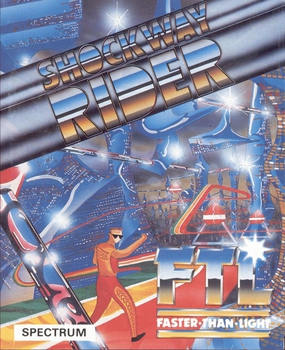
Shockway Rider is an action fighting and shooting game released for the Amstrad CPC, the Commodore 64, and the ZX Spectrum. It was developed by Carter Follis Software Associates and was released in 1987.

Ghostbusters II is a 1989 action game based on the film of the same name. It was published by Activision for various computer platforms. British studio Foursfield developed a version for Commodore 64, Amiga, Atari ST, Amstrad CPC and ZX Spectrum, which also got ported to the MSX by New Frontier. It features three levels based on scenes from the film. Dynamix developed a separate version for the DOS, also based on the film. The non-DOS versions were praised for the graphics and audio, but criticized for long loading times, disk swapping, and the final level. The DOS, Commodore 64 and Amiga versions were the only versions released in North America.

Yogi Bear is a 1987 arcade adventure video game developed by British studio Dalali and published by Piranha Software. It was released in Europe for Amstrad CPC, Commodore 64 (C64), and ZX Spectrum. In the game, Yogi Bear sets out to rescue Boo-Boo after he is captured by a hunter. Yogi Bear received praise for its graphics, but criticism for its controls.




















